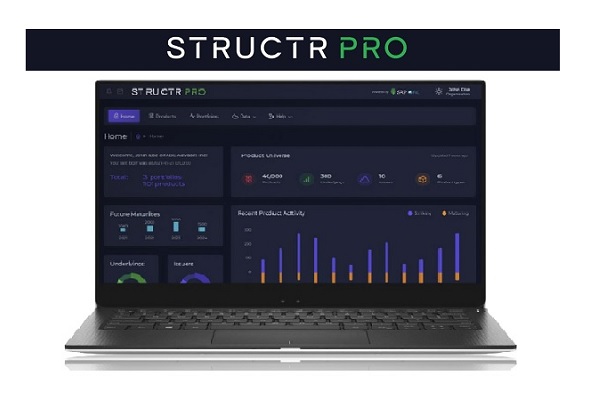Structured products provide a broad range of investment opportunities used by investors around the world looking for precise exposure, defined returns and risk control. One of the most important design considerations for any structured product is to put together a compelling combination of underlying asset and payoff profile that is appropriate for the target market and investor base.
Many different underlying assets are used in structured products markets, including direct equities, funds, currencies, interest rates and commodities. However, the most widely used group of underlyings consists of indices. There are various reasons for this, starting with the fact that the main benchmark indices are very well known and are the easiest way to track markets. Every country and region has different indices to choose from to represent their equity markets. There are also popular indices from all the major index providers to cover other asset classes including bonds and commodities. Index technology has developed strongly in recent years and new indices are straightforward for index providers to create and set up. The index business is now well regulated with the advent of Benchmark Regulation (BMR) in 2018.
Because of their popularity, these indices often have active futures and options markets, as do some of their tracking Exchange Traded Funds (ETFs). The existence of these play a critical role in the hedging and risk management of index linked structured products which further increases their usage in structured products.
Types of indices
While benchmark indices are well established, the last twenty years has seen development in other areas. In this and a follow-on article we will examine the different types of indices that are used in structured products markets. In this first piece we will concentrate on the “traditional” index categories of market capitalisation, sectors and factors. The second part will look at “next-generation” areas of ESG, thematic and strategy indices. Index construction can take many different directions and there are numerous examples of indices that have properties in more than one of the categories we have just listed.
Introducing traditional indices – market cap
The most obvious category to start with is that of market capitalisation indices. These dominate the structured product market landscape, just as they do in ETFs and the mutual fund world. The biggest of these include the S&P-500 for the USA, Eurostoxx-50 and FTSE-100 for Europe, and Nikkei and Hang Seng in Asia. Indices covering a wider remit are also popular, including the MSCI World Index which is a global market capitalisation index.
These indices have some features in common, they represent their underlying markets very well, the underlying equities are easy to trade, and their futures and options are very liquid. They also have a strong investor rationale, this is particularly true for investors coming out of cash or other simple investments for the first time. If such investors wish to gain equity exposure with some of the benefits of structured products such as capital protection, risk control or performance in different market scenarios then it is very logical to take underlying equity exposure which is transparent and familiar. Otherwise, the investor is being asked to take two leaps at the same time which for many is not the right approach.
In general, the different structured products payoffs can be paired with any of these indices to good effect. The relative frequency of the different choices depends to a certain extent on the market preferences where they are based. For example, the EuroStoxx-50 has a lot of products with participations, caps and buffered returns, all types of exposure popular in European markets. The S&P-500 tends to be used for slightly more aggressive shorter dated structures such as auto-callables, callables, barrier and capital at risk digital products. Source for all product examples and categories for this article is www.structuredretailproducts.com.
Targeting sector performance and exposure
The next progression in terms of targeted exposure is to use indices linked to different sectors. Popular examples in this category include the banking sector, for which the Eurostoxx Banks index is widespread in European markets. From the same index provider the Oil and Gas sector Index is also used actively. Both these sectors have been in the news in recent years because of their performance which has seen periods of alternating strong growth and decline, characterised additionally by high volatility. These indices still have a good number of constituents and there is also the possibility to theme such an index globally by taking banks resident in different markets.
When employing a sector-based index the importance of timing and asset allocation is much increased. Such indices are probably best avoided by a first-time investor and their usage restricted to a small allocation even for experienced groups.
Properties of sector indices
One of the best arguments for investing in a new underlying via a structured product is that risk can be much reduced by incorporating full or very significant capital protection. However another aspect comes into play because single sectors will tend to be more volatile than the benchmark index the stocks are drawn from. Therefore, there is a lot of issuance into capital at risk products that benefit from the pricing that higher volatility underlyings bring, such as Auto-calls, capital at risk digitals, and reverse convertibles. In such cases generally the underlying just needs to perform flat or even slightly down in order for these yield based products to show good results. This is a tempting approach but care must be taken to examine the likelihood and impact of poor scenarios.
Trying the factors
The final group of indices we shall consider here are the “factor” indices. The most common of this group are those based on value and high dividend stocks. These can be considered smart beta indices although they are now so established and commonplace that they have really moved out of that bracket. Value indices select companies that are showing strong fundamentals relative to market value and these often include those with high dividend yields (since if fundamentals and cashflow are good but the share price is lower than might be expected then yields will be higher).
Factor indices such as the Solactive European Deep Value Index are based on principles used by fund managers for selecting out of favour companies. For this type of strategy the dividends received will be a significant part of the overall return. An index built on this basis can be created price return, total return, or total return minus a synthetic dividend. It is well known that a high dividend yield underlying makes structured product terms more attractive but this comes at higher risk.
In conclusion we see that the three traditional groups of indices analysed here offer a varied choice in structured products markets and are used in thousands of products across the world.
Tags: AlgorithmsA version of this article has also appeared on www.structuredretailproducts.com
Image courtesy of: Ben O'Bro / unsplash.com














